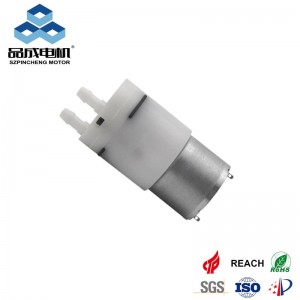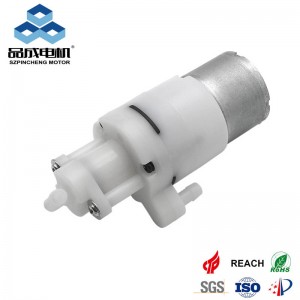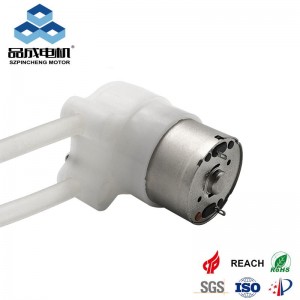Brushed DC motors and brushless DC (BLDC) motors are both widely used in industries ranging from consumer electronics to industrial automation. While they share the same foundational principle of converting electrical energy into mechanical motion, their designs, performance characteristics, and applications differ significantly. This article explores the critical differences between brushed DC motors and brushless DC motors, helping engineers and designers choose the right solution for their projects.
1. Fundamental Design Differences
Brushed DC Motors
-
Commutator and Brushes: Use physical brushes (typically carbon or graphite) and a commutator to switch current direction in the rotor windings.
-
Mechanical Contact: Brushes maintain constant contact with the commutator, creating friction and wear over time.
-
Simple Construction: Fewer components (rotor, stator, brushes, commutator) make them cost-effective for basic applications.
Brushless DC Motors
-
Electronic Commutation: Replace brushes and commutators with an electronic controller (ESC) to manage current flow.
-
Permanent Magnet Rotor: Magnets are mounted on the rotor, while windings are on the stator, eliminating physical contact.
-
Complex Electronics: Require sensors (Hall effect or sensorless algorithms) for precise timing.
2. Performance Comparison
| Parameter | Brushed DC Motor | Brushless DC Motor |
|---|---|---|
| Efficiency | 70–80% | 85–95% |
| Lifespan | 1,000–3,000 hours | 10,000–20,000 hours |
| Maintenance | Regular brush replacement | Maintenance-free |
| Speed Control | Limited by brush wear | Precise via PWM signals |
| Noise | Higher (brush friction) | Lower |
| Cost | Lower initial cost | Higher initial cost |
3. Key Advantages and Disadvantages
Brushed DC Motors
Pros:
-
Simple, low-cost design
-
Easy speed control with basic circuits
-
No external controller required
Cons:
-
Limited lifespan due to brush wear
-
Lower efficiency and higher heat generation
-
Sparking and electromagnetic interference (EMI)
Applications: Toys, small appliances, power tools.
Brushless DC Motors
Pros:
-
High efficiency and power density
-
Longer lifespan with minimal maintenance
-
Quiet, smooth operation
-
Better heat dissipation
Cons:
-
Higher initial cost and complexity
-
Requires electronic speed controller (ESC)
Applications: Drones, electric vehicles, medical devices, industrial robots.
4. Why Efficiency Matters
BLDC motors outperform brushed motors in energy conversion:
-
Reduced Friction: No brushes mean less mechanical loss.
-
Optimized Magnetic Fields: Electronic control ensures precise alignment of stator and rotor fields.
-
Regenerative Braking: BLDC motors can recover energy during deceleration (common in EVs).
Example: A drone using BLDC motors achieves 25% longer flight times compared to brushed motors.
5. Maintenance and Reliability
-
Brushed Motors: Require periodic brush replacement (every 500–1,000 hours). Dust from brush wear can contaminate sensitive environments.
-
Brushless Motors: No physical contact between components eliminates wear, making them ideal for sealed or hard-to-access systems.
Case Study: A factory reduced downtime by 60% after switching conveyor motors from brushed to brushless.
6. Cost Considerations
-
Brushed Motors: Lower upfront cost (typically $5–$50) suits budget-limited projects.
-
Brushless Motors: Higher initial cost ($20–$200+) but lower total ownership cost due to energy savings and longevity.
Tip: For high-duty cycle applications, BLDC motors often pay for themselves within 1–2 years.
7. Choosing the Right Motor
Consider these factors:
-
Lifespan Requirements: BLDC for long-term use; brushed for short-term or disposable products.
-
Environment: BLDC for dusty, wet, or vibration-prone settings.
-
Control Complexity: Brushed motors for simple on/off tasks; BLDC for variable-speed precision.
Conclusion
The choice between brushed DC motors and brushless DC motors depends on balancing cost, efficiency, and application demands. While brushed motors remain relevant for low-cost, simple systems, BLDC motors dominate in high-performance, maintenance-sensitive applications.
Keywords: brushed vs brushless DC motors, BLDC motor efficiency, brushed motor maintenance, electronic commutation, motor lifespan
Explore High-Performance Motors:
For custom motor solutions, visit PinCheng Motor to discover brushed and brushless DC motors tailored to your needs.
you like also all
Post time: May-14-2025




